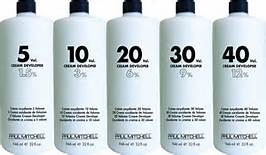Many
people try to highlight their hair at home, then become horrified when they see
"orange!"
This blog will help you understand the facts on how to neutralize
the orange!
While I
attended beauty school, Mrs. Caldwell's favorite saying was:
"Know the basics! Everything we do in
cosmetology
will bring us back to the basics."
For me, hair coloring was the hardest subject to
learn in beauty school. It was not until I had my own salon and started to
experiment with Matrix SoColor that the color wheel and the basic knowledge, I acquired
about color, came to life for me. In this blog I want to share some basics of
the color wheel and the levels hair goes through when lightening the hair,
and how you can neutralize the "orange" that can emerge.
1. Know the Color
Wheel and the contrasting colors !
In
hair coloring,
to have success in the final results, the most important thing to know is
the color wheel.
Hair
has under-lying tones (mostly red shades) the color opposite on the color
wheel will tone out the unwanted tone. Green
Neutralizes red, Blue neutralizes orange
and violet neutralizes yellow.
There are ten levels to the natural
hair colors.
Red tones in the hair
are the hardest color to lighten out of the hair and the hardest to
stay in. As you can see in the chart above red covers 80% of the chart, stating
with the dark brown up to the orange, but does not stop there. YES...... When
you are dealing with hair, there may be under-lying tones of red
(very small amount) that will reach up to the yellow/gold level. That is where
people don't realize there is still a small amount of red that needs taken
out by highlighting more or neutralized.
When highlighting hair
there are two things that are vital to the results.
1.
Is the hair Virgin--
never colored?
2.
Is the hair previously
colored?
Highlighting virgin hair is different from highlighting already colored hair.
Artificially colored
hair has a coating, whatever color was put into the hair. IT takes more
time and a higher volume of processor to lighten already colored hair.
4. Know What Product
You Will Use!
Different manufacturer,
such as Paul Mitchell, Wella,
Redken, (for licensed professional) or
Salon Care which can be purchased from Sally's beauty supply, for the non-licensed
person. use there own developers with their highlighters, but the use is
basically the same to lift the color out of the hair shaft.
5-10 Volume Peroxide The energy or strength of this developer is used for
semi-permanent, no-lift hair color. Designed for deposit only. If you want to
add a tint or color tone to hair of the same lightness level, it has enough
strength to open the cuticle layer of the hair allowing the color molecules to
penetrate and color to be deposited in the cortex.
20 Volume Peroxide The energy or strength of this developer commonly used with
permanent hair color and opens the hair cuticle like 10 Volume, but also offers
lifting of the hair's level by 1-to-2 levels. 20 Volume Peroxide is used to
best effect when the hairs starting level is no more than one shade darker than
the color you are trying to achieve.
30 Volume Peroxide When highlighting hair, the energy or strength of this
developer works just like 20 Volume except that it will lift the hair's
starting color by 2-to-3 levels and works best when the target color is no more
than two levels lighter than the starting color
40-50 Volume Peroxide The energy or strength of this developer is designed to
lift 4-5 levels when highlighting.
It's important to remember that the
stronger the developer is, the harsher it can be on your hair.
You should always use a moisturizing
conditioner after applying a stronger hair color.
5. Just Do It!
The best way to see how all of this works is to experiment and
do it. If you are not a student of cosmetology, you can purchase an all-natural-hair manikin head online and
experiment like they do in beauty school.
Try using the different
levels of developer on small subsections of the head until you feel comfortable
trying it on yourself or someone else. |
| My granddaughter's "Color ART" |










